Just so you know, this post contains affiliate links. If you book a tour, hotel, or buy something through one of these links, I may earn a small commission—at no extra cost to you. It helps me keep this blog running and full of travel tips. Thanks for the support!
Singapore is more than just a convenient stopover—it’s a dynamic city bursting with culture, history, and futuristic architecture. If you’ve only got one day in Singapore, don’t worry—you can still experience its rich heritage, iconic landmarks, and mouthwatering cuisine. Whether you’re strolling through China Town’s historic streets, marveling at the futuristic Gardens by the Bay, or posing in front of the Merlion, this 1-day Singapore itinerary will help you make the most of your short visit. Buckle up for an adventure that seamlessly blends the old and new in one of Asia’s most fascinating cities.
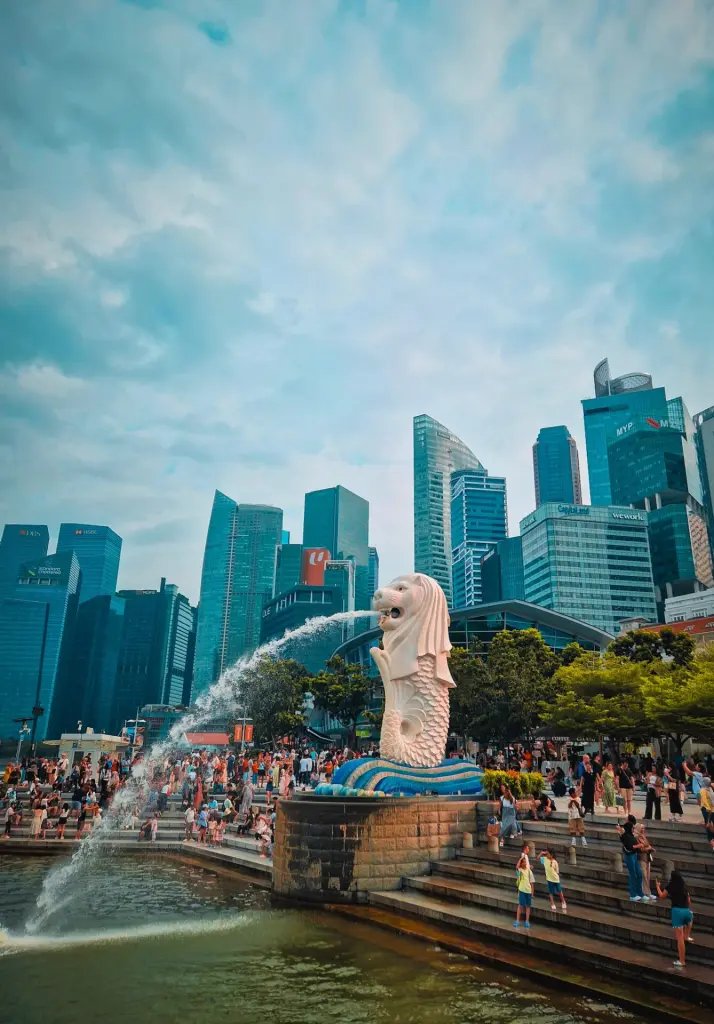
Is it worth visiting Singapore for only 1 day?
Singapore was my first stop in Asia, and I immediately fell in love with it—I wished I had more time! Since Singapore is notoriously expensive and I was embarking on a year of travel, I decided to limit my stay to one day. Unlike Kuala Lumpur, where it feels like the Batu Caves are the one major thing to do, Singapore felt absolutely bursting with interesting sights. I packed in a lot of experiences, including one big surprise!
Why a One-Day Visit is Worth It:
- Even with one day, you can see major landmarks, try local food, and explore different neighborhoods.
- You can experience a mix of history, culture, and modern attractions in a short time.
- The city is compact and well-connected via MRT, making it easy to get around.
- Changi Airport offers a free 2.5-hour city tour if you’re on a long layover.
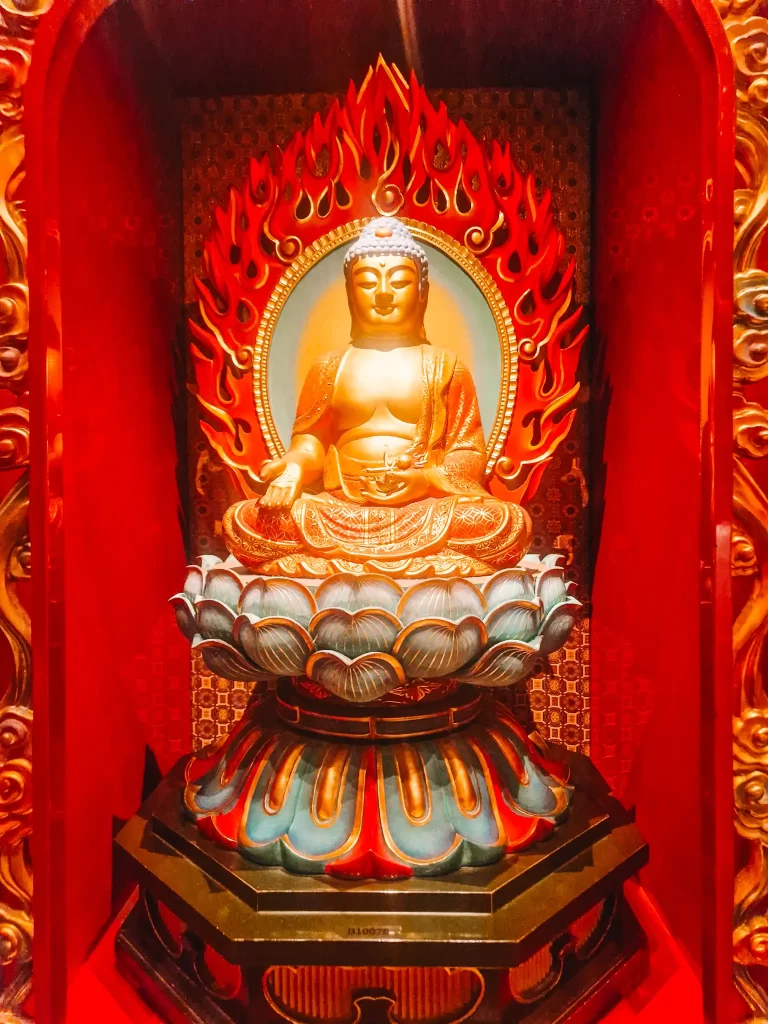
Understanding Singapore’s history
You’ll get a lot more out of your one day itinerary in Singapore if you have a little bit of an understanding of the city’s history before you start exploring.
Singapore is famously now an ultra-modern city state, but that wasn’t always the case, and one of the things I found most fascinating was the juxtaposition of that modernity with more historic parts of the city.
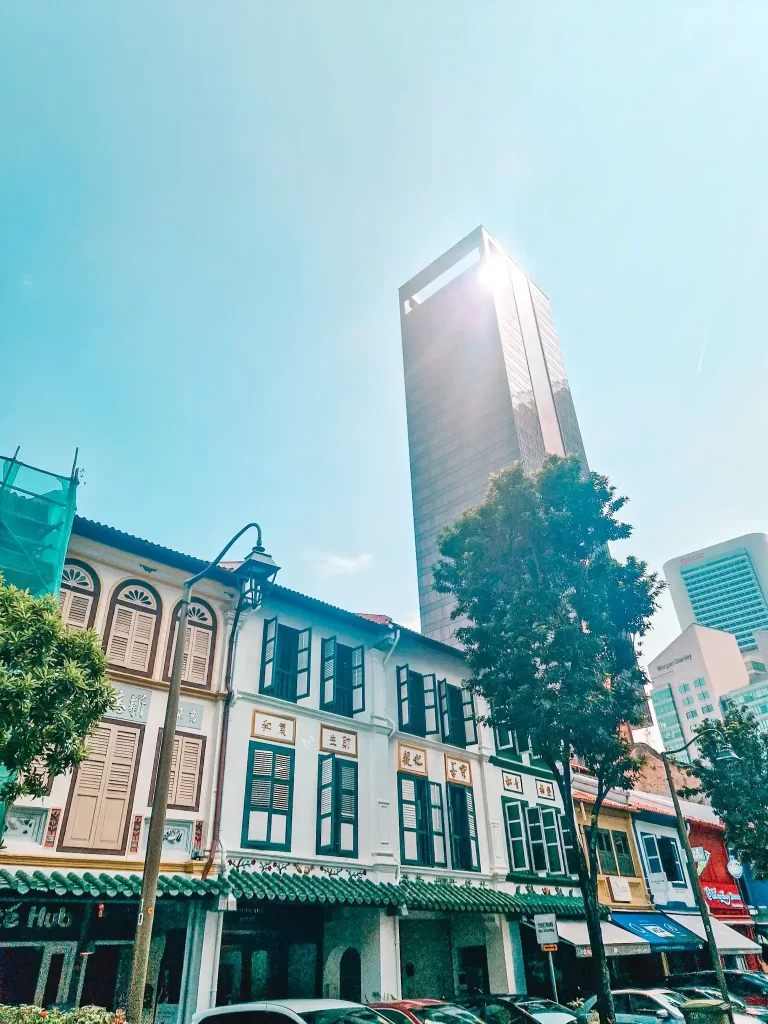
While there’s evidence that a trading post existed on the island in the 14th century, Singapore’s more recent history really took off in the 19th century. In 1819, the famous British coloniser Stamford Raffles negotiated to create a trading post on the island – and there are still many parts of Singapore named after him today. In 1867, Singapore became a British colony, becoming one of the Straits Settlements alongside Malacca and Penang. This lasted until the Japanese invasion in World War II, leaving a lasting influence on the city.
After World War 2, Singapore returned to British control with increasing levels of independence. It initially became a part of Malaysia in the 1960s, before separating from Malaysia and becoming an independent republic in 1965.
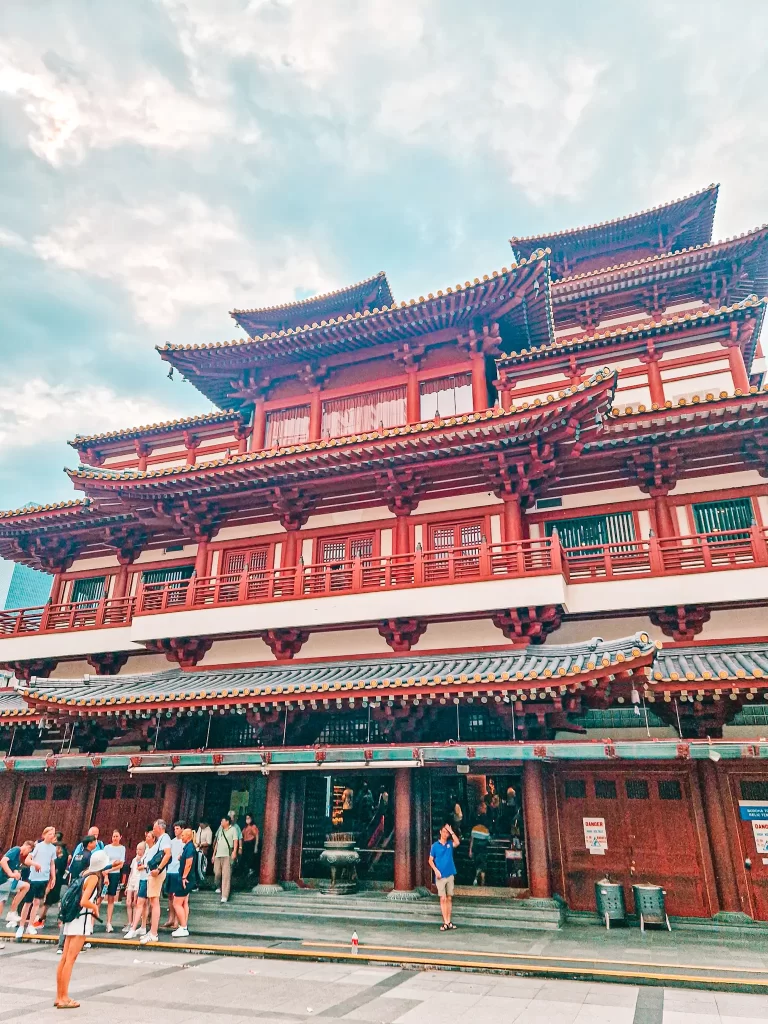
Like many Malaysian cities, Singapore is a multicultural city, and part of your day will be spent visiting the areas of the city inhabited by the three main groups which form Singapore’s population: Muslim Malays around Kampong Glam, China Town and Little India.
Singapore has a rich literary heritage. Check out my guide to books set in Singapore (and other parts of Southeast Asia) if, like me, you learn about history through reading well-researched novels.
Your ultimate 1 day itinerary for Singapore
Organising your day
I’ve based this schedule of things to do in Singapore starting from China Town, as this is where I was staying. However, it’s easy to mix this around if you’re staying in a different part of the city. I would however recommend doing the Gardens By the Bay last, as this will get you there in time for the evening light show.
Top Tip: Singapore is generally a conservative city, and many of the activities on my list involve visiting temples. It’s definitely worth dressing conservatively, and if you’re female, make sure that you either cover your shoulders and knees or carry something you can put on quickly to enter religious sites.
Stop 1: China Town
Cost:
- Sri Marianmman Temple – free
- Buddha Tooth Relic Temple – free
- Thian Hock Keng Temple – free
China Town is now a bustling, modern part of Singapore, including a useful mall which you can enter directly from the metro station (lots of local and international fast food options, if you need to eat in a rush). But you can also find hints of the area’s past among the backstreets, and it’s a great area to wander around.
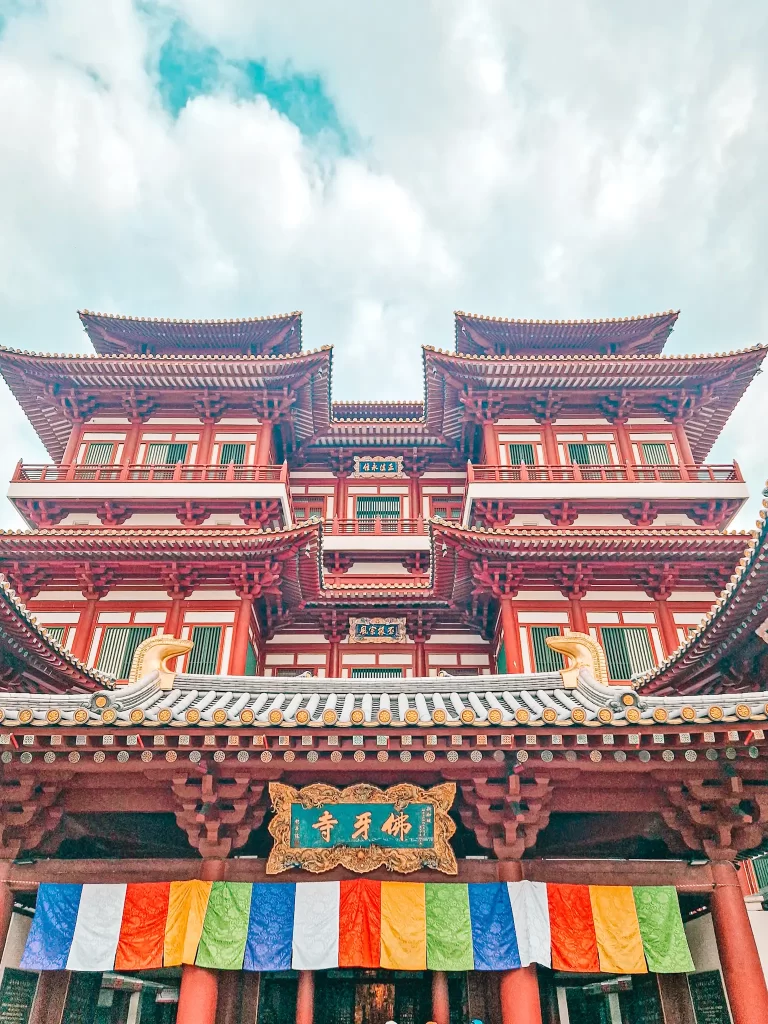
Between 1840 and 1900, 2.5 million people migrated from southern China to Singapore. Even earlier, Sir Stamford Raffles recognized the importance of the Chinese community and designated a large area for them. The biggest area they settled, modern day China Town, became known as Kreta Ayer, meaning water cart, which referred to the bullock carts that were once common in this area.
If this is where you’re starting your day, consider having breakfast at Ya Kun Kaya Toast. Kaya Toast is the signature breakfast of Singapore, and Ya Kun is a famous chain that has offered the breakfast since the 1920s. The branch in China Town dates back to 1944 and is their oldest outlet.
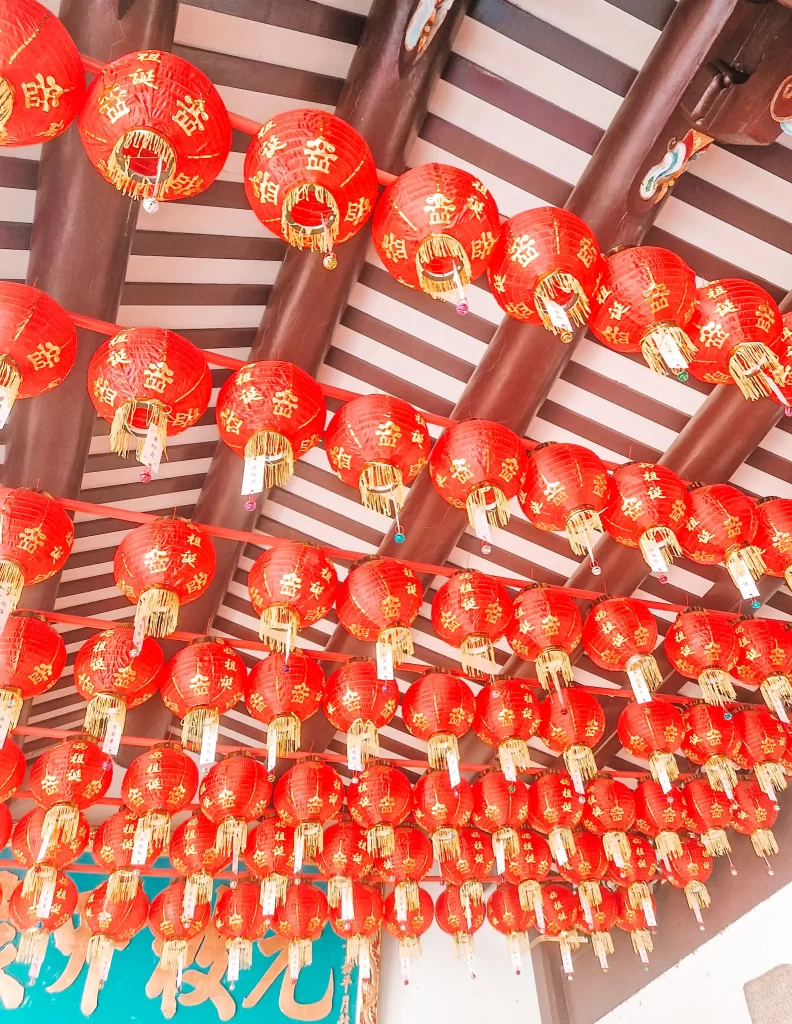
Highlights include:
- Thian Hock Keng Temple – Dating from the 1840s, this is one of the oldest Hokkien temples in Singapore. Built entirely without nails, this amazing temple has a huge amount of glorious artwork and decoration throughout.
- Sri Marianmman Temple – This beautiful Hindu temple is the oldest in Singapore, dating from 1827. Despite being in China Town, this temple serves the Hindu population of Singapore. Make sure to check out the stunning entrance.
- Buddha Tooth Relic Temple. This is one of the most famous buildings in China Town, built to hold the sacred Buddha Tooth Relic. Visitors can enter and admire the architecture and amazing decoration inside.
Singapore is full of street art, particularly in Kampong Glam.
Stop 2: Haji Lane and Kampong Glam
Cost:
- Sultan Mosque – free
- MRT from Telok Ayer to Bugis – $1.30 SGD
Once you’ve wandered around China Town, it’s time to explore Singapore’s Muslim history. This also happens to be one of the most instagrammable spots in this most instagrammable of cities.
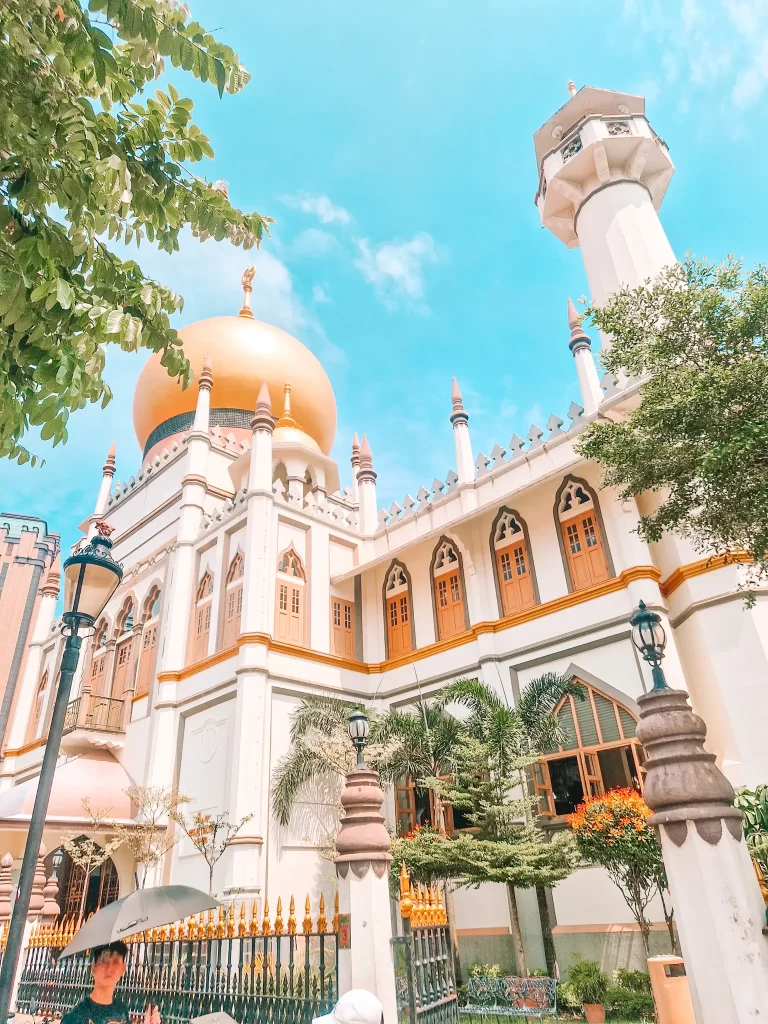
It’s an easy journey from either the main China Town metro or Telok Ayer metro, depending where you are in China Town. Take the blue line to the Bugis stop. Once you exit the metro, follow the crowds for about 10 minutes to Haji Lane.
History of Kampong Glam
Kampong Glam (also spelt Gelam) was once the seat of Malay royalty and probably derived it’s name from the Gelam tree. It is home to the beautiful Sultan Mosque, the biggest Mosque in Singapore, and different streets were settled by Muslims from different countries in Asia. The area also catered to the shopping needs of Singapore’s Muslim community, and originally, many streets had specific trades.
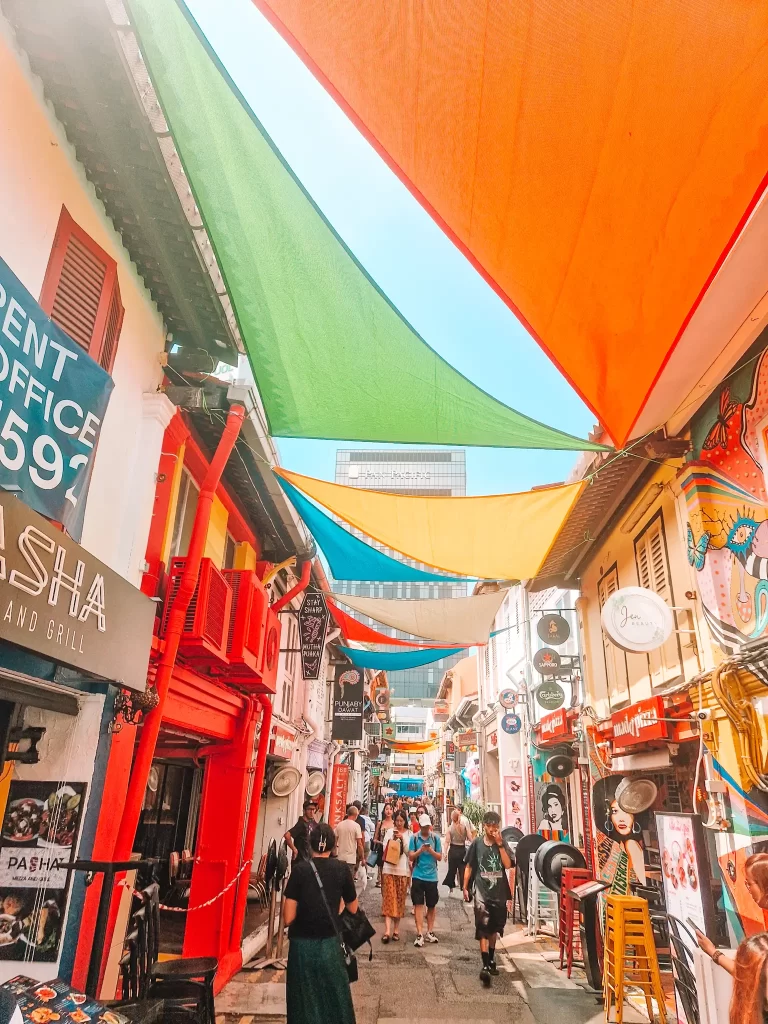
Haji Lane is the busiest and most famous street in Kampong Glam. Named after the Muslim Hajj, the pilgrimage to Mecca, it was originally a residential street that also provided pilgrimage services, building on its proximity to Sultan Mosque. It’s a narrow row of traditional houses now filled with tourist-friendly shops and cafés. Expect to find instagrammable shop fronts, small independent stores and far more photo booth studios than you can imagine in such a small street.
What to do in Kampong Glam
Take your time wandering around Haji Lane, Arab Street and the surrounding streets. Like George Town and Ipoh in Malaysia, Kampong Glam is full of street art to admire as you walk around. Then make your way down to Sultan Mosque. Unfortunately when I was there, it was open for prayer only. Take the time to visit if it’s open and if you are wearing appropriate clothing.
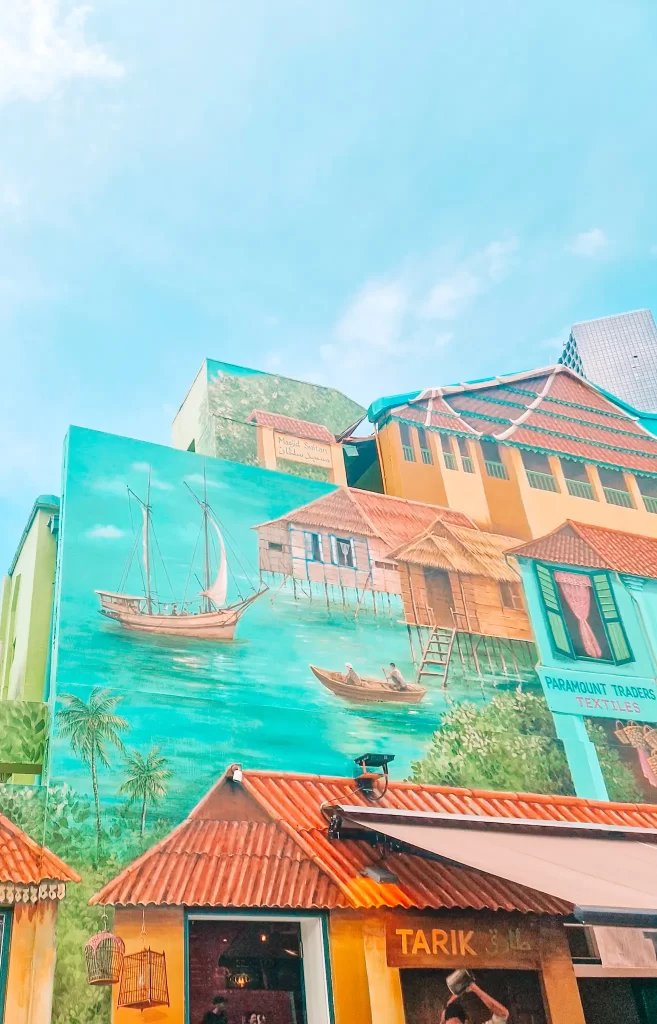
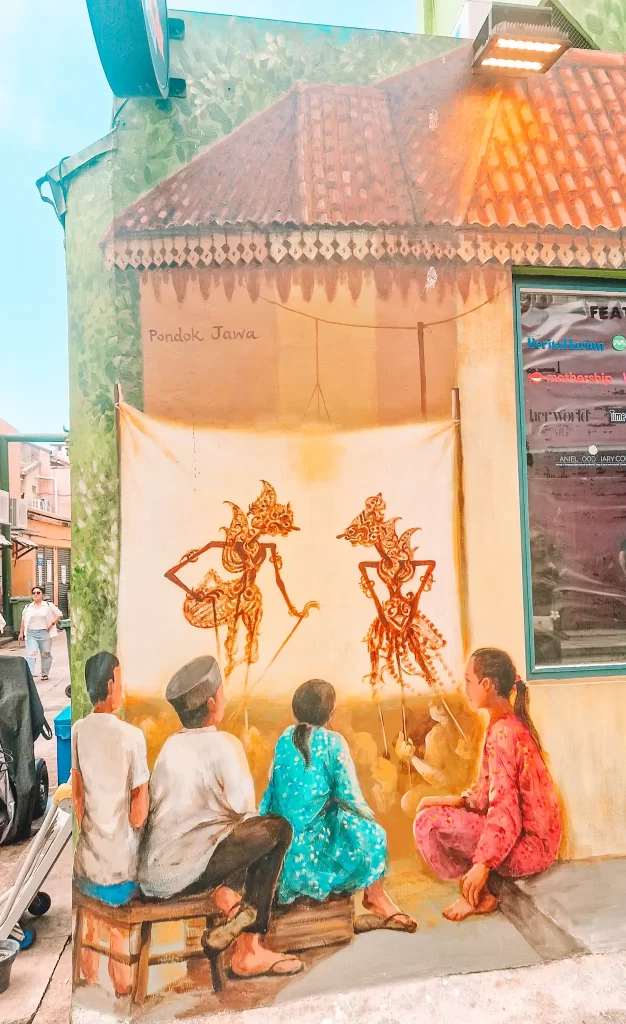
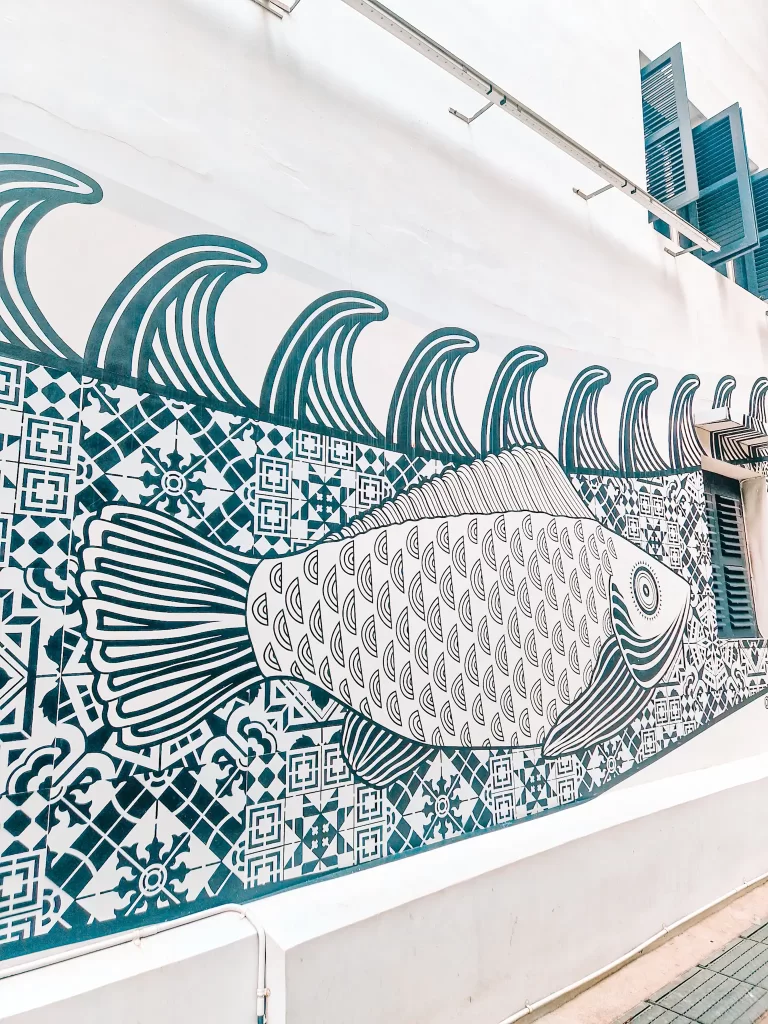
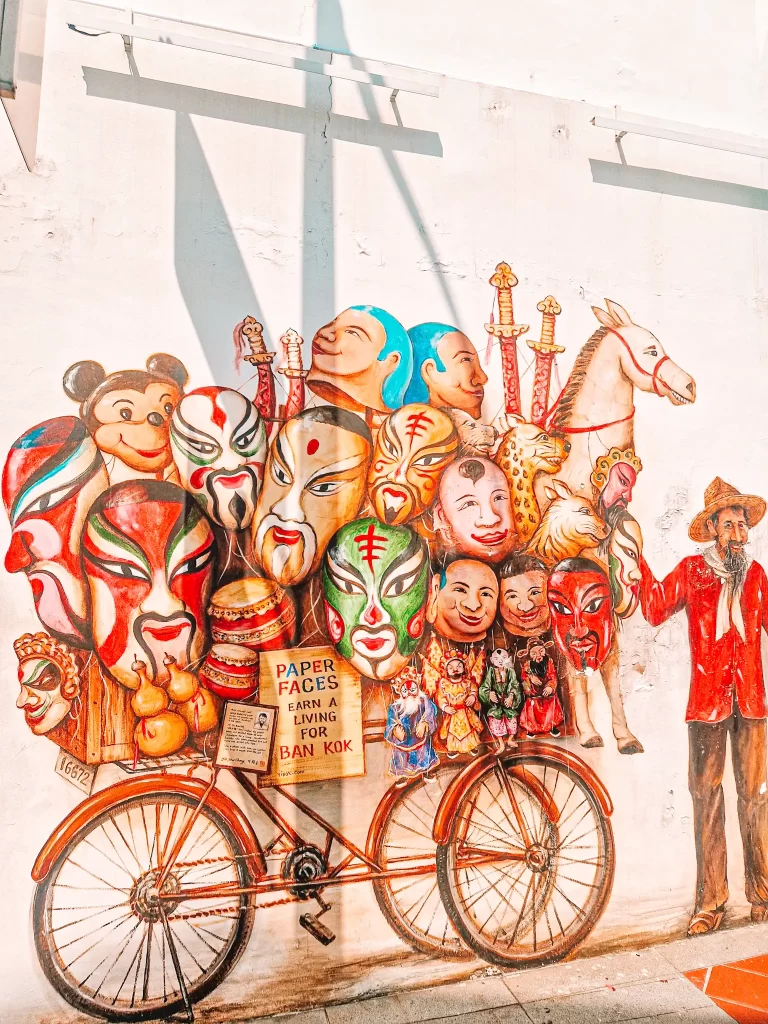
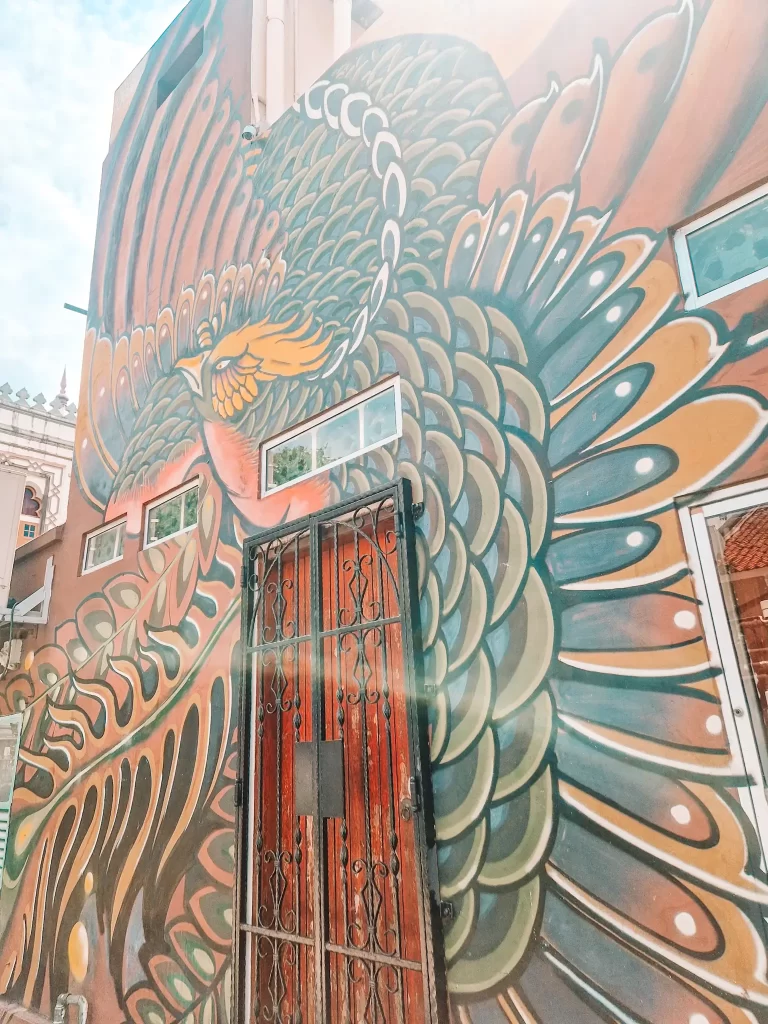
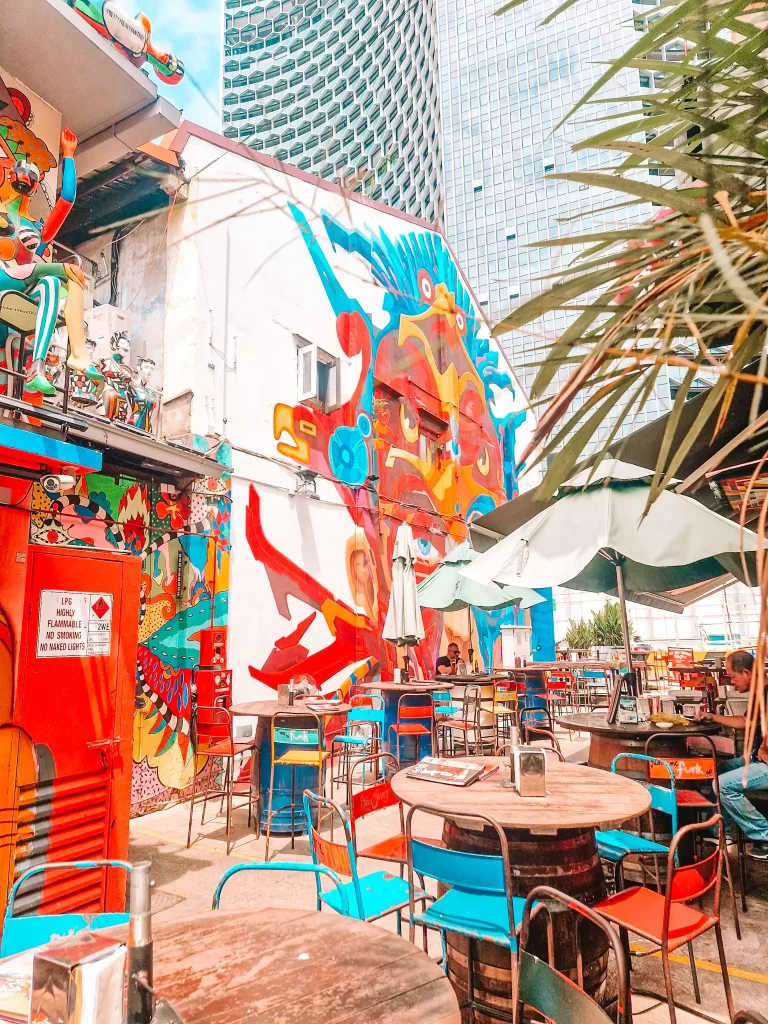
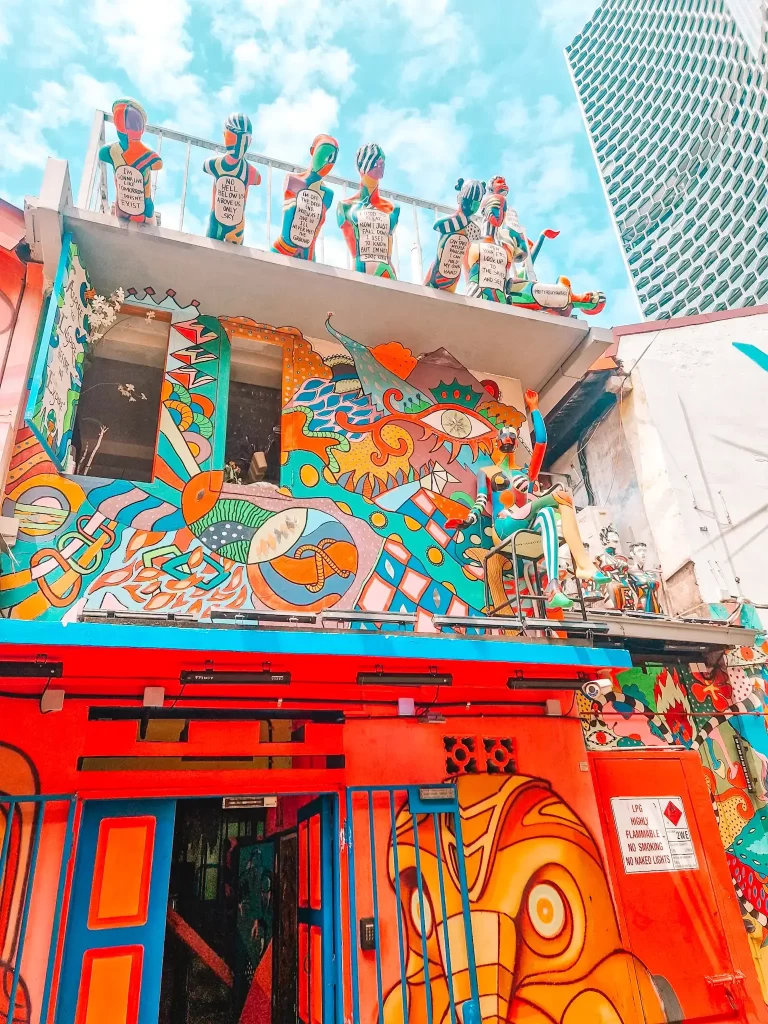
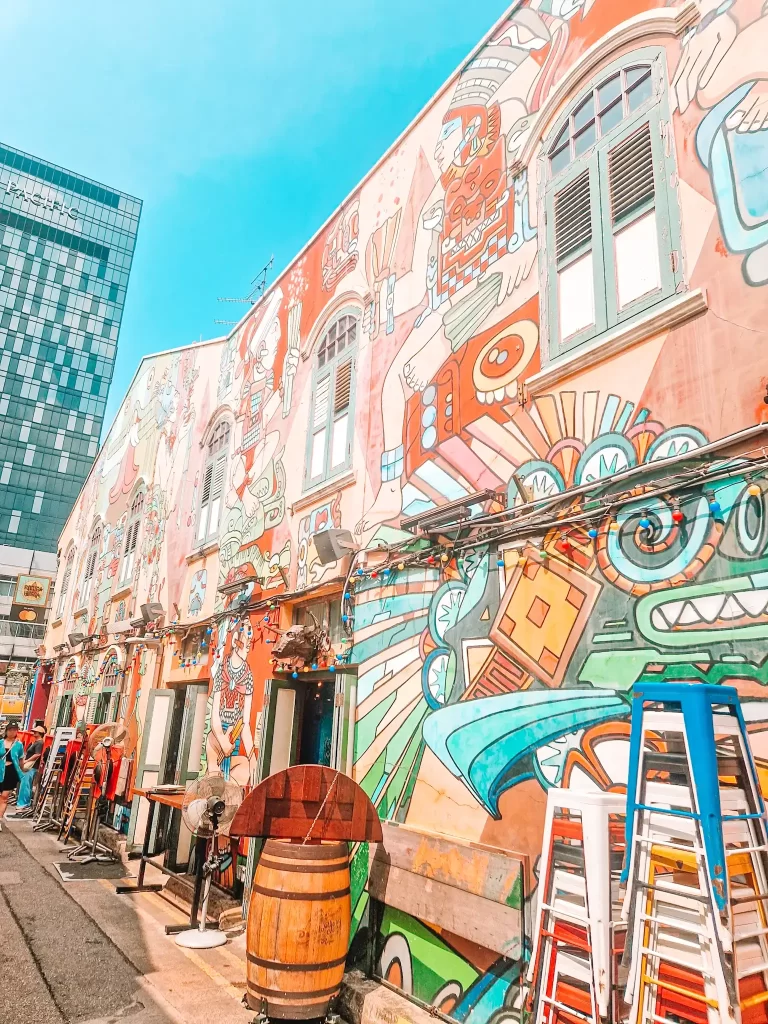
There are a multitude of different restaurants in Kampong Glam, so this can also be a great area to stop for lunch. Alternatively, if Indian food is your fave, there are plenty of great places to eat in Little India, your next area of Singapore to visit.
Surprise Singapore stop: What the Pug cafe
Cost:
- Weekdays: $20 SGD
- Weekends: $25 SGD
Singapore is full of surprises. Just when I thought my itinerary was packed, I stumbled upon a cozy pug café in Kampong Glam. While animal cafés are common in Southeast Asia, Singapore’s strict regulations make them rare—which is why What the Pug is a unique find!
What the Pug offers the option to book in advance and this is definitely recommended, although I was able to walk in. The cafe runs sessions every couple of hours during the day. The owner of the cafe is their dad and spent time talking to us about the rules Singapore puts in place to ensure their welfare.

As part of your visit, the owner will take a Polaroid for you, and you’ll also get a bottled drink. This was a lovely way to spend an hour during a busy day, not least because the cafe had glorious cold aircon. It was also a good chance to sit down after a good few hours of walking.
Stop 4: Little India
Cost:
- Entrance to Sri Veeramakaliamman Temple – free
- MRT Bugis to Little India – $1.20 SGD
Once you’ve enjoyed a good lunch or cuddled pugs in Kampong Glam, it’s time to head to Little India.
Take the MRT Blue DT Line from Bugis to Little India, and once again follow the crowds to the centre of Little India.
While Little India was originally a British colonial enclave, due to its proximity to a race course, it later became a centre of buffalo trading because of its riverside location. As buffalo trading was primarily an Indian trade, many Indian families began to settle in the area.
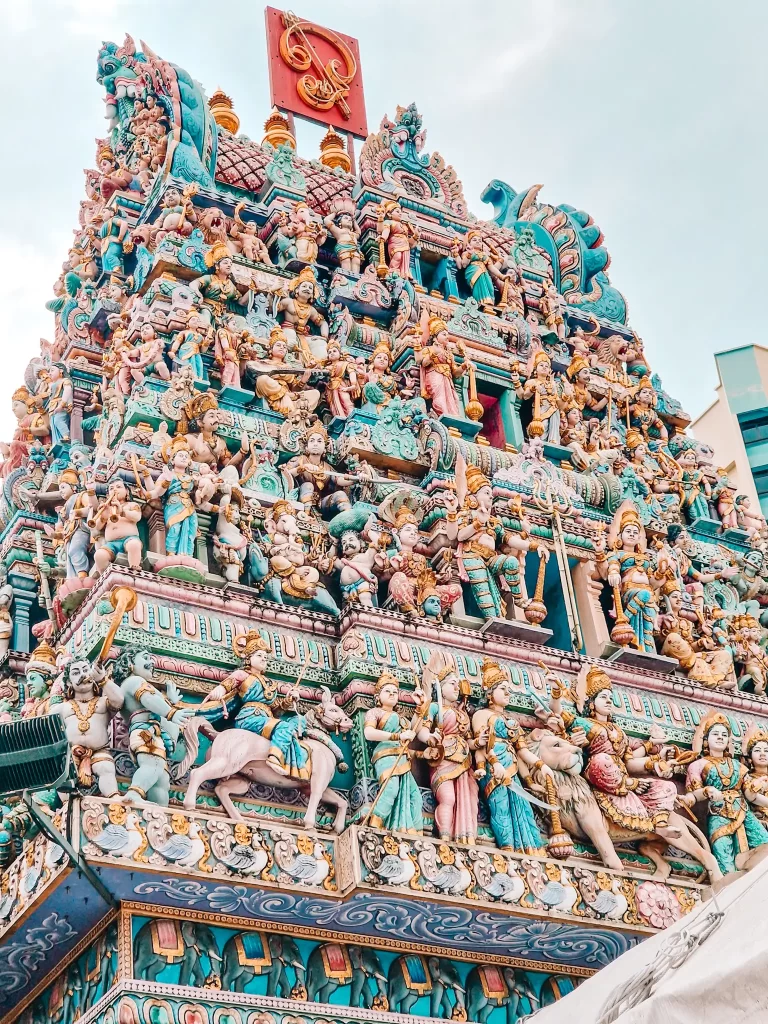
The first thing to do in Little India is head to the Sri Veeramakaliamman Temple on Serangoon Road. Built in 1855, this is one of the oldest temples in Singapore and is dedicated to the Goddess Kali. The stunning architecture is unmissable, providing an excellent orientation point in Little India.
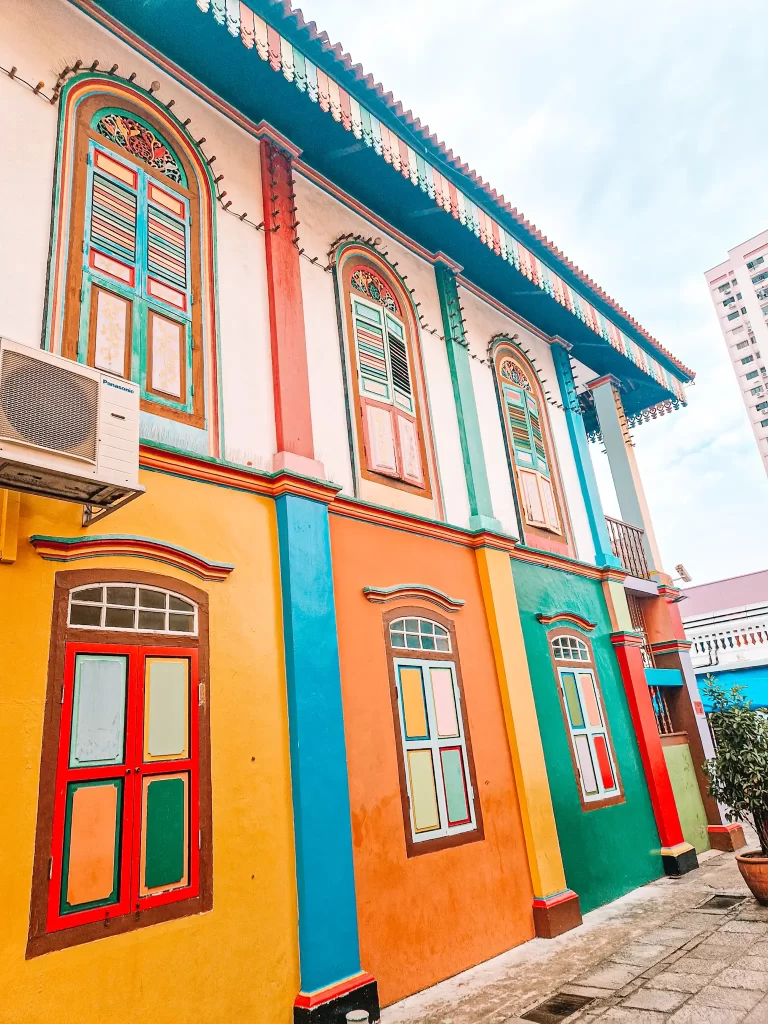
Near the temple is the house of Tan Teng Niah, which was built in 1900 and is the last surviving Chinese villa in the area. Tan Teng Niah was a Chinese sweetmaker who worked alongside the Indian businesses on the Serangoon Road. While you can’t enter this building, the colourful architecture makes it a great instagram photo spot.
If you didn’t eat at Kampong Glam, Little India is also a great spot to find lunch. Head to one of the many restaurants in the area, or wander into the bustling Tekka Centre to find the food court. This enormous hawker centre provides food from different cuisines, some of which are recognised by the Michelin Guide.
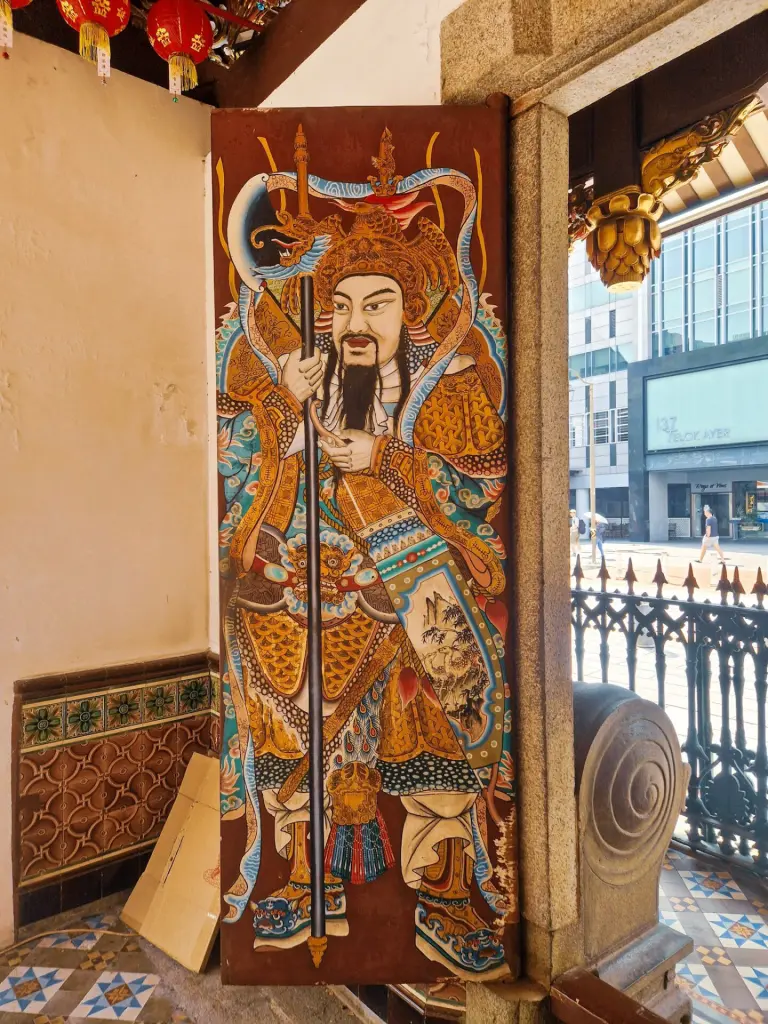
Stop 5: Merlion statue – the emblem of Singapore
Cost: Free
After visiting Little India, it’s another good opportunity for a short break. I chose to go back to my hotel for an hour (I was battling jet lag from flying in from England), but you could also head for a coffee.

The next stop I recommend is visiting Singapore’s famous Merlion statue, on the harbour. The easiest way to reach the Merlion is by Grab, as the nearest metro stop requires a bit of a walk. If you are coming from Little India on the MRT, you’ll need to take the Blue line (DT) to Downtown and then walk about 15 minutes. That doesn’t sound like a long walk, but it can be brutal in Singapore’s heat.
There are also a number of big hotels and restaurants in this area that would make a great break, with beautiful views of the bay. One of the most famous and historic is the Fullerton Hotel, a fabulous art deco hotel on the harbour. Built in 1928, this used to be Singapore’s General Post Office before being converted into a hotel.
Once you’re ready, head to Merlion Park on the bay. The Merlion is the symbol of Singapore and the fish body represents Singapore’s history as a fishing village. The lion head relates to the fact that the original name, Singapura, means ‘Lion City’ in Sanskrit. The Merlion was created in 1964 for the Singapore Tourist Board.
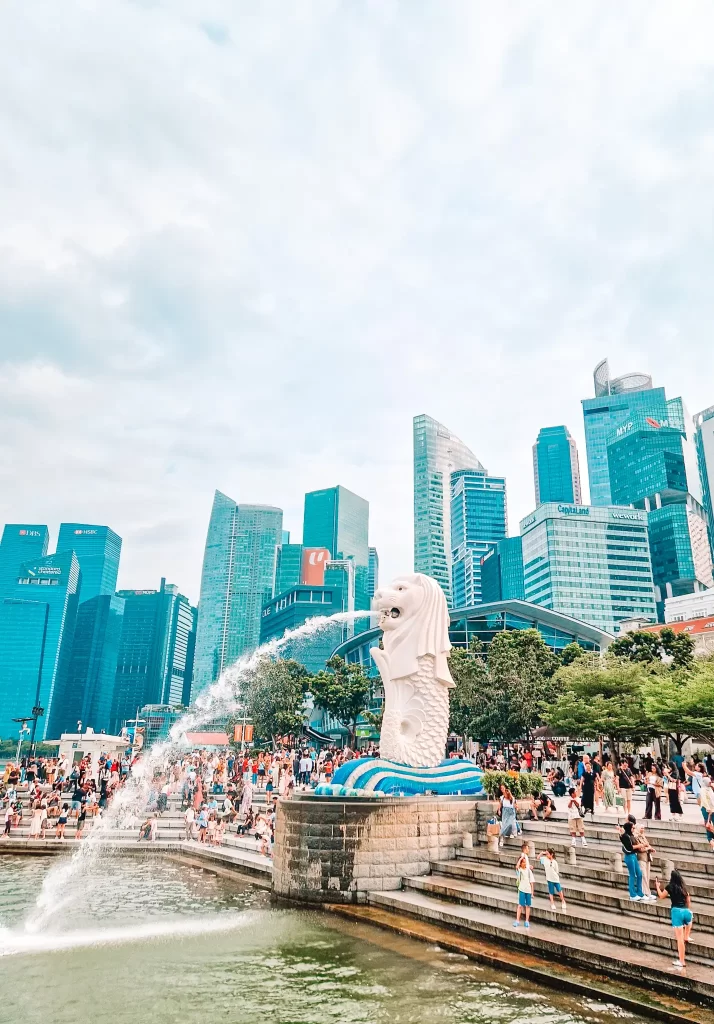
It’s pretty inevitable that Merlion Park is going to be crowded unless you go very early in the morning. Navigate through the crowds to find the perfect angle for a photo of this Singapore icon.
From the waterfront, you can also get pictures of the famous Marina Bay Sands Hotel, an absolute must-see on your Singapore itinerary.
Stop 6: Gardens by the Bay, a Singapore icon
Cost:
- Cloud Forest – $32 SGD
- Supertrees – Free
- Shuttle service from entry – $3 SGD
Gardens by the Bay is a Singapore icon, a futuristic nature theme park that sprawls around the harbour area. You could easily spend most of a day at Gardens by the Bay, but if you’re only in town for one day, you probably don’t have that luxury.
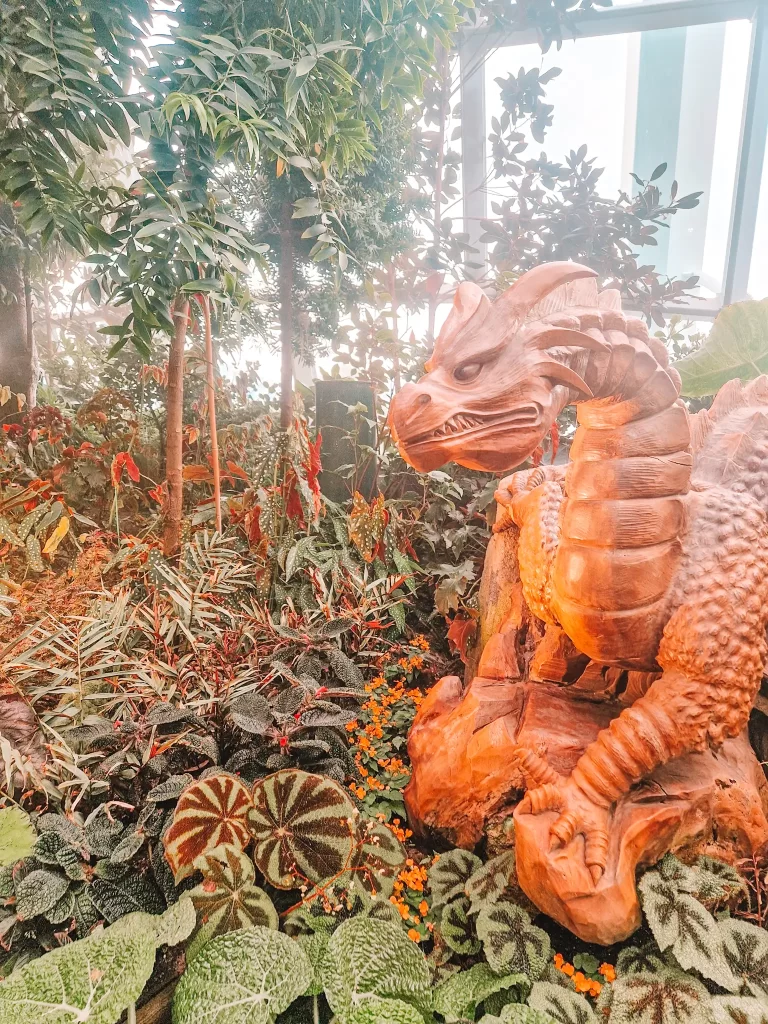
I’ll admit, the ticketing options were a bit confusing. Given my time constraints, I focused on one major attraction along with the Supertrees. I opted for the Cloud Forest.
Getting to Gardens by the Bay
First, you need to get to Gardens by the Bay. You can take the MRT to Bayfront Station, which brings you relatively near to the entrance. I walked from the Merlion, which is a substantial walk – consider taking a Grab as well.
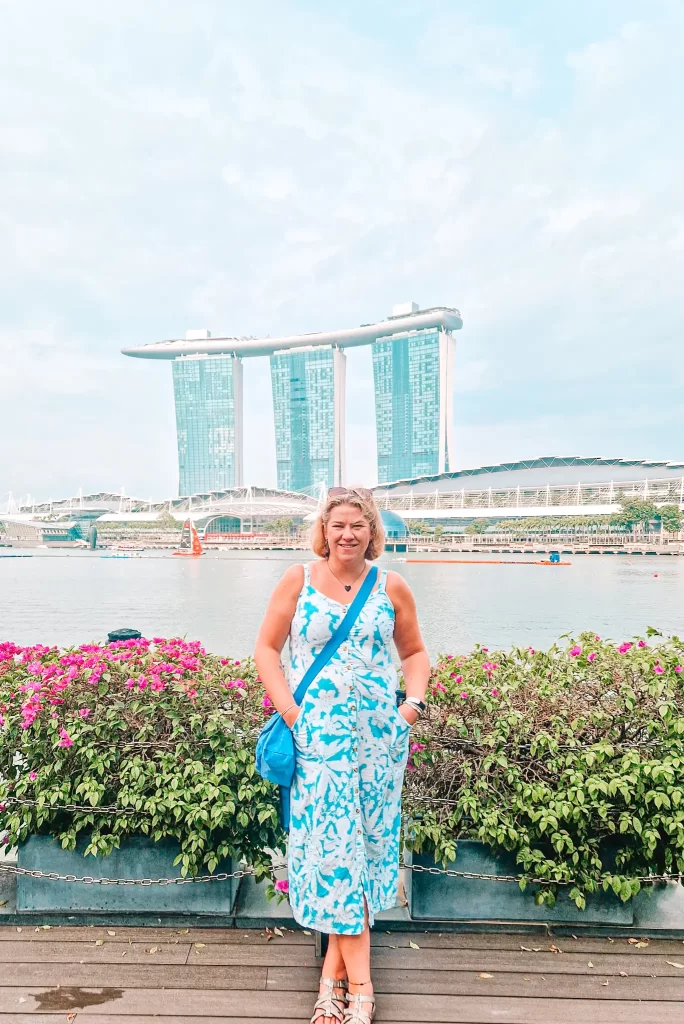
Once you arrive at the entrance, you’ll need to make your way to the attraction you’ve chosen. Given the site is so large, and assuming you’ve already done lots of walking during the day, it’s worth taking the Shuttle Service across the site, which costs $3 SGD.
Visiting the Cloud Forest
I absolutely loved visiting the Cloud Forest, which features a large indoor waterfall. It’s stunning inside – you walk around the lower levels before taking a lift up to the very top. You then wend your way down, stopping at different installations on different levels. It gives you a birds eye view of the waterfall, as well as the rest of the exotic plant species featured throughout the dome.
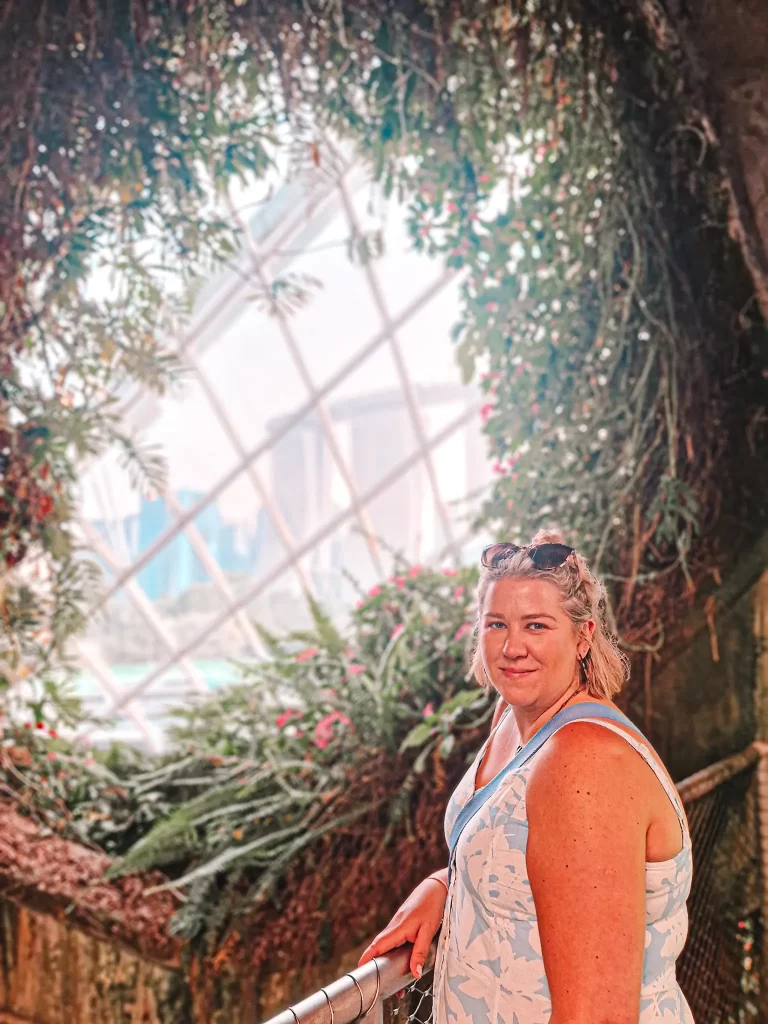
Supertree Grove
If you’ve timed your day well, you should finish up at the Supertree Grove in time to find a good spot for the Garden Rhapsody evening light show at the Supertrees, which starts at 7.45pm and 8.45pm daily.
Given that you’ll probably be hungry and thirsty at this point, it’s good to know that there are vendors selling drinks around the Supertree Grove. There are also a couple of restaurants nearby, though they were very busy when I was there.
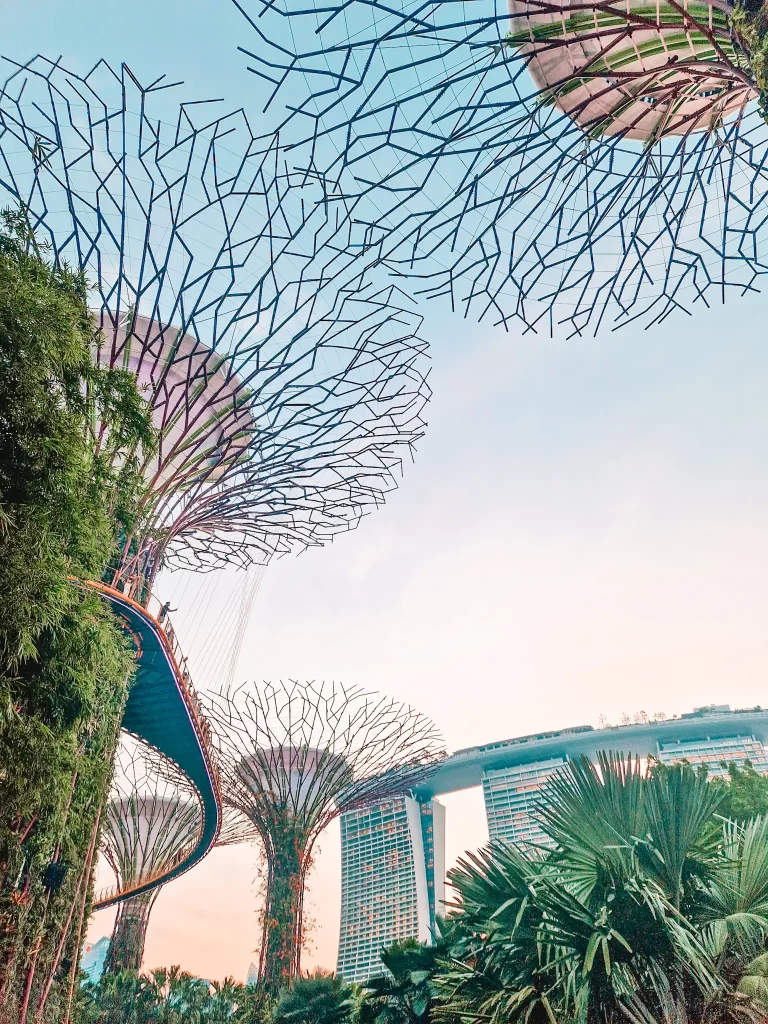
Unfortunately, jet lag and a full day of sightseeing, plus the thought of an early flight the next morning, got the better of me and I crashed out. But I’ve heard so many amazing things about the Supertree show while I’ve been travelling – if you have the stamina to make it to the end of the day and watch the show, it will be well worth it!
Even in just one day, Singapore offers an unforgettable mix of history, culture, and futuristic wonders. Whether you’re stopping over or planning a longer visit next time, this itinerary ensures you’ll leave with a true taste of the Lion City.
Frequently asked questions
Arriving in Singapore: Getting from Changi Airport to the city
As Singapore is a city state, the vast majority of people will arrive at the fabulous Changi Airport, rather than land or sea. It’s easy to get to from Europe, with multiple airlines flying to Singapore. It’s also well connected to the rest of South East Asia.
There are regular flights to Malaysia, including Kota Kinabalu in Borneo, Indonesia (inluding Jakarta, Bali and Yogyakarta), Thailand (incluidng Bangkok and Chiang Mai), Vietnam (including Ho Chi Minh City, Da Nang and Hanoi) and other popular countries. There are also international buses from Malaysia.
Changi Airport is ultra-modern. Most travelers use electronic gates, where their arrival card is digitally registered, making immigration incredibly fast—even quicker than in my home country!
Changi is well connected to the city, but be aware the airport is vast and you’ll need to know which terminal you’re arriving into to make your onward travel plans.
MRT (Subway)
Take the Changi Metro MRT Line to Tanah Merah or Expo Station for connections.
City Shuttle
Shared transport to central hotels, running every 30 minutes. Find them at the 24 hour Ground Transport Concierges in any terminal.
Taxi or Grab
More expensive but convenient. Grab pick-up gates are located at each terminal.
Where to stay in Singapore
If you’re only spending a short time in Singapore, you want to make sure you’re not wasting unnecessary time travelling (though some travel is inevitable and easy – see the section below).
I based myself in China Town, near the China Town metro stop. I found this a great location – the two metro lines took me to almost everywhere I wanted to go. I stayed at the Bliss Hotel, which had good showers, excellent aircon and was right by the metro. However, note that many rooms don’t have windows, if this is important to you.
The alternative to China Town is to stay in Kampong Glam. This is definitely an area where tourist options like restaurants are more tightly concentrated, and would make a great base.
Travelling around Singapore
Like Kuala Lumpur, Singapore is really easy to get around:
MRT (Subway) – Fast, affordable, and air-conditioned. Use a contactless card for payment. If you’re only planning a few trips, this works out as economical as trying to get a day pass. It’s also quick and easy. You use this handy official fare calculator to work out exact costs.
Grab (Ride-hailing App) – Great for convenience, especially in the heat. I never found traffic to be bad in Singapore – certainly not compared to places I visited later like Kuala Lumpur. Use Grab when the metro won’t take you directly to where you want to go, or if you need a break from the heat.
Walking – Some areas are pedestrian-friendly, but Singapore’s heat can be intense.
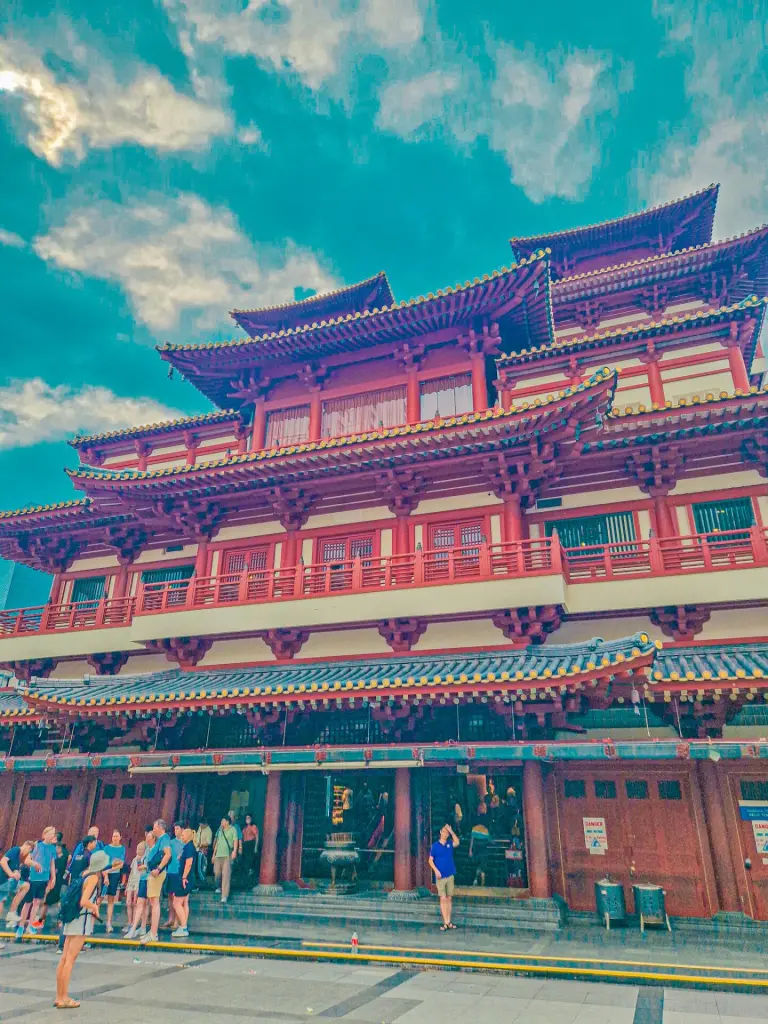
One day in Singapore might not be enough to see everything, but it’s certainly enough to leave you wanting more. From exploring the city’s multicultural neighborhoods to watching the Supertrees light up at Gardens by the Bay, this itinerary ensures you experience the best of Singapore in a short time. Whether you’re on a layover, a quick getaway, or just passing through, Singapore’s blend of history, modernity, and culture makes it an unforgettable destination.
After a full day of exploring, my feet were definitely feeling it—25,000 steps later, I’d covered some serious ground! But every step was worth it for the incredible sights, hidden gems, and unforgettable moments along the way. Now, I’m curious—how many steps do you usually rack up when you’re out exploring? Let me know in the comments!

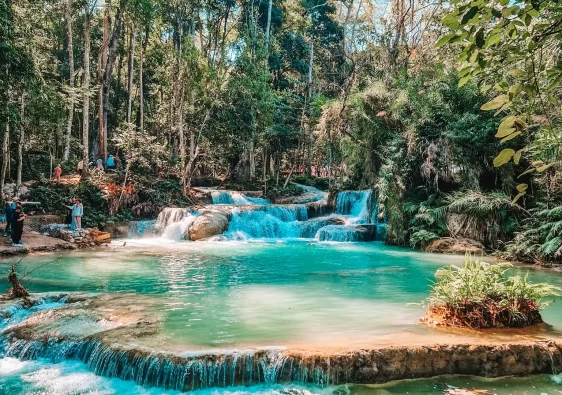
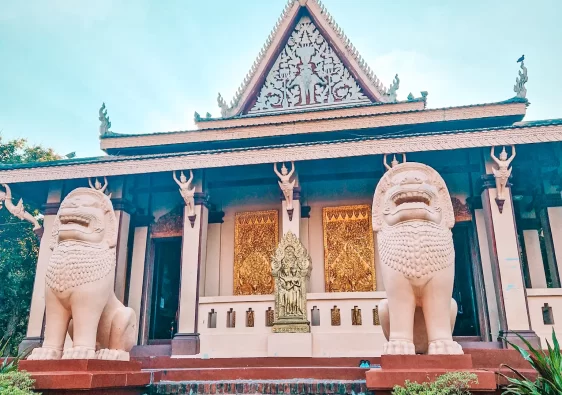
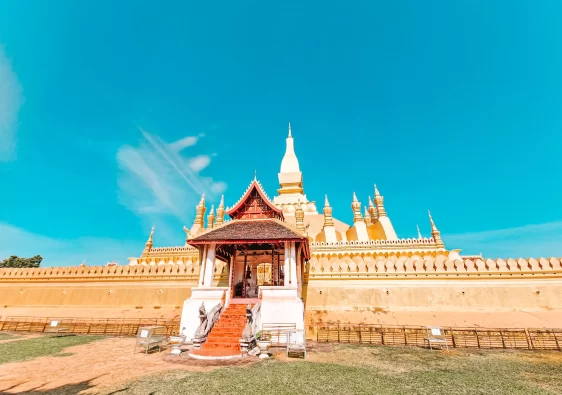
Thanks for this useful advice. Since Singapore is the next destination of my SE Asia tour, you’re helping me to make some decisions.